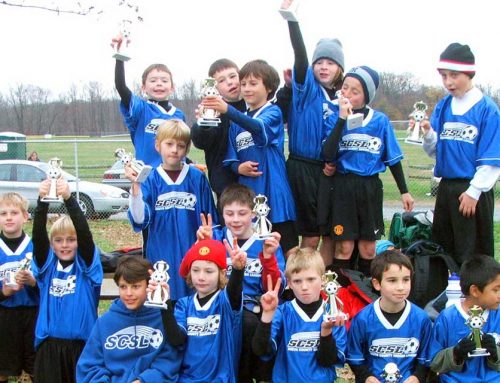Alcohol Use
The experimentation with alcohol and other substances that sometimes begins in high school frequently becomes more thoroughly entrenched as a student enters college. The impact of alcohol on the college athlete is frequently overlooked among the hoopla and glory that surrounds college athletic events. Binge drinking is especially prevalent among college students, both athletes and non-athletes. This appears to be among the rites of passage North American young people pass along the way of eventually (in most cases) learning how to drink in a controlled and social way.
The fact is that alcohol use and athleticism work at cross-purposes. While many athletes in particularly demanding or aggressive sports take their partying as seriously as their sport – in that they go all out in each – the fact is that alcohol and substance use negatively impacts on performance. Research reported through the University of Norte Dame’s Office of Alcohol and Drug Education clearly underscore this point. Among their findings are the fact that an athlete’s attention span is reduced for up to forty-eight hours after drinking; that consuming five or more alcoholic beverages in one night can affect brain and body activities for up to three days; and that two consecutive nights of this level of drinking can increase the duration that brain and body activities are impacted for up to five days. This makes it clear that partying hard on the weekend after a game can set in motion a cycle of gradually decreased athletic performance. Over the course of a season the results can be quite significant.
The following excerpts from the University of California in San Diego’s Athletic Performance Nutrition Bulletin highlight a few of the significant side effects of alcohol use that are of particular importance to athletes:
Dehydration
Alcohol is a powerful diuretic that can cause severe dehydration and electrolyte imbalances. A night of partying is always accompanied by dehydration. Severe dehydration can require several days to a week for full recovery, during which time an athlete is at greater risk for musculoskeletal injuries including: cramps, muscle pulls, and muscle strains. Also, dehydration can lead to severe brain impairment and even death when coupled with extreme temperatures and intense practices (most notable during two-a-days).
Performance Alcohol, when consumed in amounts typical with college binge drinking can dramatically decrease serum testosterone levels. Decreases in testosterone are associated with decreases in aggression, lean muscle mass, muscle recovery and overall athletic performance. It will also impair reaction time and mental acuity for up to several days after consumption. Alcohol can also cause nausea, vomiting, and drowsiness for up to several days after consumption.
Energy
Alcohol delaminates (destroys) amino acids and stores them as fat. Alcohol consumption, therefore, increases fat storage and adversely effects body composition (increasing % of body fat). Powerful energy pathways (like glycolysis) are impaired and large amounts of lactic acid are produced, this results in decreased energy, decreased muscle recovery, and increased muscle soreness. It will also take longer to reload muscle fuels (glycogen). Normally we can reload our muscles with fuels in 8-12 hours, but after drinking it can be 16-24 hours.
Judgment
Even the smartest college students are capable of decision-making that can easily be characterized as “stupid” when under the influence of alcohol. This can manifest in both the early and later stages of the drinking cycle. When a person begins to drink their inhibitions are lessoned to some degree. This “lightening up” is what feels good, but it might lead a less experienced drinker to say or do some things (such as drink more) that they might later regret. In the later stage of an evening of drinking the central nervous system depressant qualities of alcohol consumption come into play. People can literally feel depressed and/or angry and frequently be at risk exercising considerably poor judgment. This might manifest socially with fighting, sexual aggression, sexual inhibition, despondency or belligerence or with making the choice to continue to drink. If the alcohol does not cause noticeable physical harm in the moment, a drunk scholar-athlete’s decision making may very well.
Marijuana Use
Marijuana is the most widely used illicit drug in the Western world and as such it has found a secure home on the college campus. A study conducted by the U.S. Substance Abuse and Mental Health Services Administration reported that 17.4 million Americans were using marijuana in 2010, an increase of 3 million users from 2007.
Marijuana use among college-aged students jumped from 19.6% in 2008 to 21.5% in 2010. Among college-aged kids, 16% have used it within the last month. Apparently it isn’t just the non-athletes who are using. For example, the NCAA’s post season drug testing report showed positive results for marijuana at championship events across all three divisions increased from 28 in the 2008-2009 academic year to 71 in 2009-2010. In 2011. Charles Thompson who is Princeton University’s head athletic trainer said that, “There are a lot of athletic trainers (at a number of universities) who feel that marijuana use on campus has grown exponentially, even among the athletic population”.
We have to take serious notice of the increase in use especially given that the potency of marijuana has increased steadily over the past three decades in terms in the level of delta-9-tetrahydrocannabinol (THC), the main mind-altering ingredient in marijuana. The average potency of marijuana now exceeds 10%, with some samples of marijuana having THC levels as high as 37%. Average THC potency levels are expected to rise to 15% within the next five years. As a point of reference, the average THC potency in the early 1980’s was only about 4%.
The following excerpts from The American Athletic Institute highlight a few of the significant effects of marijuana use that are of particular importance to athletes:
Heath Risks
Marijuana smoke contains 50% to 70% more carcinogenic hydrocarbons than tobacco smoke. It impacts the Central Nervous System and remains stored in the fat cells of the body for about 30 days. This is compounded when there is daily use and the THC is built up in increasing levels.
Effects on Performance: Psychological
It is crucial for athletes to develop and maintain a positive mental attitude in order to elevate their level of motivation necessary to optimally perform. Furthermore in order for athletes to perform up to their ability it is necessary for them to be highly focused. This is crucial in order to enter “the zone”. Marijuana use directly undercuts these mental fitness skills. Focus and motivation are negatively impacted, as is the ability to effectively process stimuli when faced with the flood of events and actions that continuously occur in sport. Marijuana affects an athlete’s cognitive ability to multitask and to sort among the various forms of input in order to effectively prioritize what to attend to and what actions to take. In addition to all of the above, when an individual becomes a daily user, they frequently become psychologically addicted to it.
Effects on Performance: Physiological
Marijuana decreases the ability to accurately assess visual depth. This has obvious implications for sport given the frequent necessity to track moving objects and determine their distance and speed. When tracking and depth perception are off, then the entire chains of events that lead to an athlete effectively blocking a shot or catching a ball are thrown into disarray. Reductions in reaction time to outside stimuli always impact on the precision and accuracy of an athlete’s biomechanics. The National Institute on Drug Abuse has documented that THC throws the brain chemistry out of balance by disturbing the natural process of the endocannabinoid system. This results in negatively impacting memory, learning, decision-making, and also gives people “the munchies”.
It is pretty obvious that for an athlete who takes his or her involvement in their sport seriously, then use of alcohol or marijuana, especially in-season is to be seriously reconsidered. Clearly neither is a performance enhancing substance. They don’t help on the field, court or pitch, nor do they help in the classroom. That said, forgetting the legal ramifications, in the off-season, the infrequent and purely social use of either can aid in relaxation and in kicking back and bonding with friends. That said, it is imperative that the athlete develops other means of coping and relaxing such as socializing, meditating, playing an instrument or being involved with another grounding activity. Given that the human brain is not fully developed until a person 25 years old at least, when it comes to these mind altering substances moderation is crucial.





